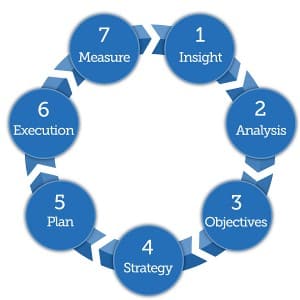This is the third article in the series on how I write international bestsellers.
Article 1: How to make an international bestseller
Article 2: The four main jobs in producing a bestseller
Article 4: Production
Allow me to reemphasise that my articles describe how I do it. I do not claim that my approach will work for you, but I hope it may serve as a source of inspiration.
My profession is not to help others to write books; I only have experience writing my own. There are books and courses on the subject if you need help with ideas and creation, just as several freelancers offer individual coaching.
As I mentioned in the previous article, my books are about revenue generation challenges in small and medium-sized software companies.
The subject field is even narrower because I only write about the B2B (business to business) area and then exclusively about the so-called single-sided business models, where companies sell a product for which the customer pays a price. Furthermore, unlike virtually all other business books on these subjects, my books include the international dimension.
My books are relevant if you are active in business development, marketing, sales, customer success, and management within the mentioned areas in a small or medium B2B software company. You may not read books (they are available in audio also), or you may disagree with my recommendations, but my target audience cannot claim that they are irrelevant.
When I categorise my books as belonging to the how-to genre, it is not because I claim that you can become successful by following a method. On the contrary, I repeatedly emphasise that such a method does not exist. My books also differ from virtually every other business book that either claims or strongly suggests that they explain the path to success. With that in mind, I may disappoint those readers searching for the METHOD. In return, I get positive feedback from readers who appreciate my position: What works for me may not work for you, and what does not work for me, may work well for you.
Therefore, my books are collections of ideas with examples of how to design scalable and profitable revenue generation processes and how to expand them internationally. I use many examples of what has worked and what has not worked for me and others.
Research
Research is a crucial part of creating a book. It takes place on three levels:
- Reading other books on the same subject (if they exist)
- Reading articles on the same topic
- Interviews
Reading books
I read about 50 books a year, most of which are non-fiction. I don’t finish them all. If I find them irrelevant and unengaging, I’ll put them aside. If I publish a book every second year, I get to read about 100 books. There are not that many on the topics I write about, so I also read other types of textbooks. I have heard from other authors that they also read many books, so perhaps one can conclude that this is probably a typical pattern: Authors read many books.
I do not know whether you should read a hundred times more than you write, but it is probably a fair guess.
Sometimes I get so excited about a book that I review it. However, reviewing other people’s books is also part of my marketing efforts. If you think this sounds weird, you should read this article.
Reading articles
Thousands of articles are written and published every day on almost every subject. You find them by searching the web. However, you get tons of junk when searching. Therefore, familiarizing yourself with using advanced tools on the search engines you prefer pays off. In between, you find something that adds new angles to your topics. Remember to make a reference when you use other people’s content. Also, when you quote from another publication. It is the correct behaviour, and you may even win a supporter.
When I wrote 5,460 Miles from Silicon Valley, I spent several weeks reading magazines and newspaper articles at the Royal Library. That type of research is enormously time-consuming but necessary if you need to document the past. From around 1992 onwards, most of what is published are archived on InfoMedia, a database you will come to love if you write recent Danish-based biographies. Other countries may have similar electronic archives.
If you are a newbie, the internet is also your primary source of information on all the elements of the publishing process. It takes time to sort through the content and find what’s relevant, but becoming a black belt search-master on the internet pays off in the long run.
Interviews
Two of my books use interviews as sources. The Silicon Valley book, a business biography, is based on over 100 interviews. For Going Global on a Shoestring, I did about fifty. I cannot run an interview and take notes at the same. Therefore, I record them, allowing me to listen later.
Most interviews take place by phone or web conference, which I prefer. For the Silicon Valley book, most sources were in Denmark, but still, it is far too time-consuming if you must conduct the conversations face-to-face. If your book has one or more protagonists, face-to-face interviews are required.
I only conducted a few face-to-face interviews for Going Global on a Shoestring because most sources were abroad.
Most people enjoy being interviewed, but they are seldom well-prepared despite being briefed. Therefore, you may have to interview some of the sources several times and have subsequent email correspondence.
It requires a unique technique to interview, and if you have not tried it before, you should probably read a few books on the subject.
Be aware that there are four to five hours of work for each interview hour, including considerable preparation.
I allow the interviewees to review what I write and ask them to approve direct quotes. In between, that leads to heated discussions. It happens when I include information from several sources, and they don’t correspond.
Complete your research before writing
Unless I am writing biographies, where interviews are the primary source, then I will finish my research before I start writing. Of course, there may be a need to check up on something, but to have the big picture fresh in mind, the writing process must not be protracted.
I need long, continuous pockets of time for writing the first drafts. I cannot write ten minutes here and twenty minutes there. The best is when I have all day to do nothing but write, only interrupted by breaks for exercise and meals. To me, it’s like getting into a trance – a state of mind where ideas flow down through my fingers and into the computer.
On the other hand, I can write anywhere, and it does not bother me that there is noise. I love writing in cafés where there is the buzz of life around me.
The editorial committee gets activated
It may take several months from when the editorial committee provides feedback on the summary until the first drafts of chapters are ready for review. It’s a weakness of my process. But since I also do other things in between, it cannot be any different. However, once the writing starts, it proceeds swiftly.
I do not write the contents of my books in the order that the table of contents suggests. In fact, there is not really any fixed sequence of when I write which sections and chapters. It all depends on inspiration and motivation. As the drafts get completed, they are submitted to the members of the editorial committee, who typically have two weeks to respond.
Although I clearly emphasise that I do not expect the editorial committee members to edit my grammar, some cannot help it. Of course, I appreciate that. Often there are good suggestions for improvements on that front as well.
Not all comments from the editorial committee impact the content of the book. Occasionally we have discussions where there are several iterations on a topic. However, it is exclusively my decision what makes it to the book. I also do not inform contributors about what I have changed. They usually must wait and see for the book to be published.
In Going Global on a Shoestring, I had specially selected subject-matter editors for individual chapters. It is probably a method I will use more in the future. It is a minor job for the editor when they only need to contribute to a single chapter or two. This way, I can more easily get core competencies engaged.
I did not use an editorial committee for the book From Damgaard to Microsoft. Instead, I hired a professional editor. Depending on the nature of the topic, that can be a good solution.
Copy editing
Although I have been using English almost daily for more than 50 years, it is still not my native language. And even if it was, there is always a need for quality checks.
The first check is done using the Grammarly app. It catches most errors, draws my attention to passive language and wordy sentences, and suggests synonyms for frequently used words and phrases. I do not always agree with Grammarly, but I follow it in 9 out of 10 suggestions.
You can either import the text into Grammarly or use the new add-in for Microsoft Word (for both Windows and Apple).
The second check is by my proofreader and copy editor, Emma Crabtree. She corrects mistakes, draws my attention to incomprehensible language, and is the one who has the final say on punctuation.
Lastly, I read the final manuscript three to four times before moving on to pagination and layout.
How many pages?
A book is a publication of at least fifty pages with 300 – 400 words per page. My rule of thumb is that my books should be about 250 pages of 400 words, including illustrations. Only one of the books has made the target. The first two were shorter, and the last three are 390 pages and more.
Unless you are Seth Godin or are writing books about existential issues (such as Who moved my Cheese – 96 pages in a small format – and The One Minute Manager – 112 pages in a small format), many potential readers will disqualify a book that is only 100 pages long.
For a non-fiction textbook, 250 pages is the correct size.
Let me stress that there are no benefits to writing more pages than necessary; neither for the reader nor the author. You should, of course, write the number of pages needed to cover the topic. But that says nothing. Thomas Piketty’s books are as thick as bricks and yet worth reading (you can choose to skip or skim the academic evidence). Other books can be short, irrelevant, and even painful to read. None mentioned and none forgotten.
The number of pages has a significant impact on your book project’s production and economy, to which I will return in a later post.
In the next post, we will address the book’s production.






